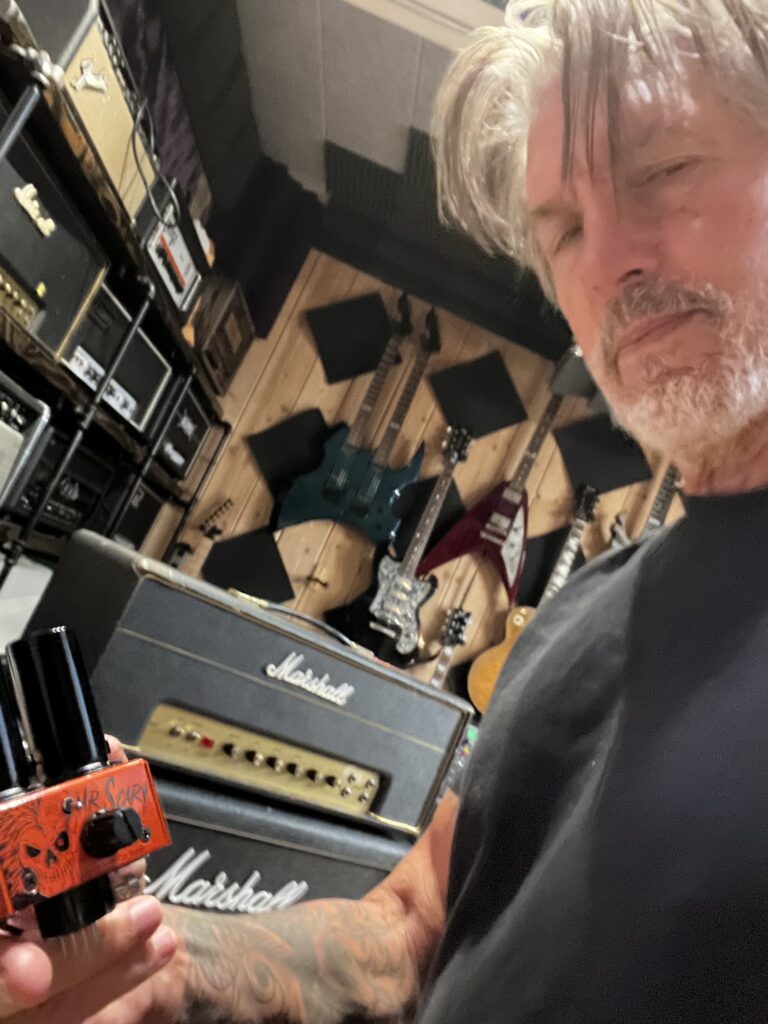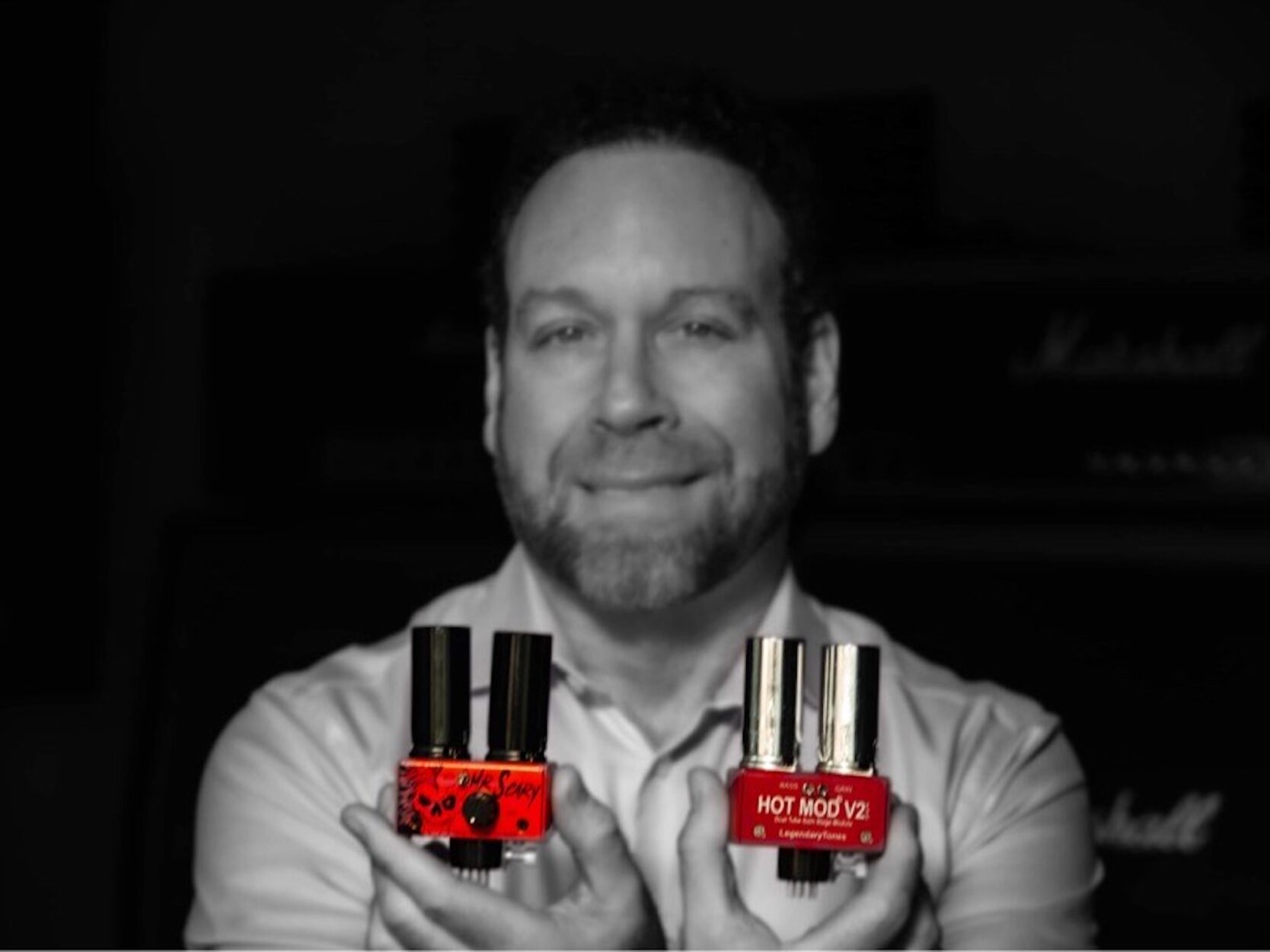In 2023, many music fans know what guitar effects pedals do. The guitarist steps on a switch, and their tone immediately changes. Some add delays, others change the pitch, and a whole lot more of them add a layer of distortion, fuzz, or overdriven sound over the top. With the rate that new pedals and equipment have been released in recent years, there’s effectively a limitless combination of sounds that guitarists can use in pursuit of their desired tone.
That wide range of sonic possibilities originally gave birth to Legendary Tones. David Szabados spent much of his guitar-playing life looking to sound like his heroes, so he put together a site dedicated to how to get specific tones from an electric guitar. From gear writeups to tips and tricks to artist interviews, Szabados created one of the largest databases available for his preferred hobby. While he knew he’d never be able to assist with every tone, the part-time guitarist wanted to help as many people as possible with going down the same rabbit hole.
But recently, Szabados has found a different calling for Legendary Tones.
Inspired by the Soldano Hot Mod and other guitar amp modifications from the ‘80s and ‘90s, Szabados created a Legendary Tones version of the Hot Mod, a small box with a pair of tubes that plugs directly into an easily accessible spot inside of the back of a classic Marshall amp head. The mod offers a plug-and-play extra level of distortion to conventional tube amps without interfering with its original character or tone — and Szabados even went out of his way to get the green light for his project from Mike Soldano himself.

While the original version received plenty of attention, where Legendary Tones’ unexpected offering really came into form was through its collaboration with revered guitar hero George Lynch. Szabados’ friendship with the Dokken and Lynch Mob guitarist went back well over a decade, but when the Hot Mod turned into the Lynch Mod (and now the Mr. Scary Mod, adopting Lynch’s old nickname) the two took a new collaborative spirit to their existing kinship.
“When the first version of the Hot Mod V2 came out, it was really well received and all that, but I knew I had to send one to George,” Szabados tells SPIN. “George liked it but wanted to do some tweaks. We went through a little bit of back and forth with a couple of different variations — one that had the gain control knob, and then one with bass control too, because some Marshalls need a low-end boost and others need the bass cut. I sent a couple of versions to George until he picked one, and we went forward from there.”
“Right away, I thought the plug-and-play feature of it was just a huge thing from a practical standpoint,” Lynch adds. “The fact that you’re not carving into a vintage amp is pretty important because if it’s not broken, why fix it? With this, you can go back to normal very easily. It’s something I’ve been building in amps for 40 years, but when you take a stock vintage amp and do a little tweak, you run the risk of destroying what’s beautiful about it. This bypasses all of that potential of doing harm to what’s already a great circuit.”
Lynch and Szabados attribute some of the success and popularity of the Mr. Scary Mod to their shared appreciation of amplifiers themselves. Both are obviously interested in guitars, pedals, and other accessories as well, but each of them realize that oft-overlooked amplifiers are one of the key components in shaping a tone.
“Most guitar players are all about their Strats and their Les Pauls and everything — and I get that too — but none of it does any good without the right amp,” Lynch says. “Your amp is the primary thing people are hearing, so you should start with that and then figure out your guitar. Then you can get into pickups and pedals and speakers. This [mod] is really about taking a great amp — which is the base for your sound — and making it 10-15% better. I’ve sent this thing to a lot of friends of mine in the guitar world, and the feedback has been universally positive. I’ve even had people reach out to me who never usually call me just to ask for one. That never happens.”
Even if the $319 price tag makes the Mr. Scary Mod a bit of a higher-end purchase for hobbyists, the simple fact that you can just turn the knob down (or remove the mod altogether) and be back to the amp’s original tone is particularly important for the purists out there — a feature that was what drew the Legendary Tones founder to it in the first place. While Szabados might be the core of the operation, it’s still just a passion project and side hustle he works on outside of his day job, so he entrusted experts from all sides to make sure everything works exactly as it should. Soldano laid the groundwork with the original Hot Mod, Lynch adds his expertise on tone, distortion, and amp mods, and Andy Marshall of THD Electronics is the creator’s sounding board and advisor on all things technical. The end result is a simple and effective product where there’s no risk of damaging the amp, no blanketed or muffled sound from an extra effect laying on top of the tone, and no front-end impedance or variation that often comes with guitar pedals.
Speaking of pedals, the most common question the duo gets about the mod is “Why not just use a distortion or overdrive pedal?” Szabados explains that the whole point of the amp mods is to add that level of crunch without compressing or altering the flavor of the amp itself. Sure, putting a $100 pedal in front of a no-name solid-state amplifier is one thing, but altering the clean tone on a 30- (or 40- or 50-) year-old amp head worth four or five digits would be considered sacrilege in some circles. Plus, Lynch and Szabados already attempted their hand at the pedal game when they worked with Robert Keeley of Keeley Electronics by creating the Time Machine Boost — a pedal combining a classic boost and a modern one that they admit they may have messed up the branding for.
“I think we just got the name wrong,” Lynch laughs.
“Everybody thought it was a delay because it was the ‘Time Machine,’” Szabados adds. “I was thinking ‘Time Machine’ makes sense since you’re going back in time [to the classic boost] and then forward [to the modern boost]. But yeah, people heard ‘Time Machine’ and they immediately thought of a delay.”
“Maybe we should do it again, but better,” Lynch says. “We can add a delay feature.”





